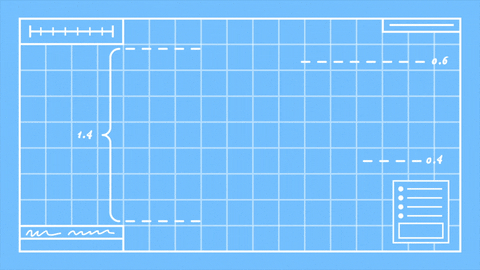Solutions Architecture in Platform Engineering
How to build better
Table of contents
- Introduction
- What is Platform Engineering?
- Why is solutions architecture important in platform engineering?
- 1. Guiding Strategic Vision
- 2. Managing Complexity
- 3. Promoting Scalability and Flexibility
- 4. Facilitating Integration
- 5. Optimizing Performance
- 6. Ensuring Security and Compliance
- 7. Supporting Informed Decision-Making
- 8. Enhancing Collaboration and Communication
- Different types of solution architectures
- Benefits of using a solutions architecture approach
- Educating and Onboarding New Team Members
- Complex vs. Complicated
- How team architecture affects systems architecture
- One-Way Door vs. Two-Way Door Decisions: Strategic Choices in Platform Engineering
- The role of solutions architecture in the platform engineering lifecycle
- Conclusion
Introduction
In the world of platform engineering, the role of solutions architecture is of utmost importance. In this blog article, we will explore the significance of solutions architecture in platform engineering, the different types of solution architectures, and the benefits of adopting a solutions architecture approach.
What is Platform Engineering?
Platform engineering signifies a strategic approach to designing, developing, and maintaining a cohesive infrastructure that fundamentally supports and manages various applications and services within an organization. It is the cornerstone in facilitating a robust, scalable, and adaptable environment that optimizes the efficient delivery and operation of software and services. Evolving beyond conventional paradigms such as DevOps and DevSecOps, platform engineering emerges as a sophisticated evolution, embodying a comprehensive and nuanced methodology that encompasses a broader spectrum of organizational and technological facets, fostering enhanced innovation, agility, and performance.

Why is solutions architecture important in platform engineering?
Solutions architecture plays an indispensable role in the realm of platform engineering for several compelling reasons:
1. Guiding Strategic Vision
Solutions architecture acts as the north star, guiding the strategic vision and direction of platform engineering projects. It helps in aligning technical strategies and designs with business objectives and user needs, ensuring that the platform delivers value and performs optimally in meeting its intended purposes.
2. Managing Complexity
Platform engineering often entails dealing with significant complexities, involving numerous integrated components, technologies, and processes. Solutions architecture aids in managing this complexity by providing a structured approach and a clear architectural blueprint. It facilitates the organized interaction between various platform components, promoting efficiency and coherence.
3. Promoting Scalability and Flexibility
Solutions architecture lays the foundation for building scalable and flexible platforms. It helps in designing systems that can adapt to changing requirements and scale efficiently with evolving business needs and technological advancements.
4. Facilitating Integration
In platform engineering, integration is key. Solutions architecture fosters seamless integration by designing interfaces and interactions that allow various system components and external applications to work together cohesively.
5. Optimizing Performance
Solutions architecture plays a crucial role in optimizing the performance of the platform. It involves making informed decisions regarding the selection of appropriate technologies, design patterns, and architectural styles to meet performance objectives effectively.
6. Ensuring Security and Compliance
Security and compliance are paramount in platform engineering. Solutions architecture helps in establishing robust security measures and ensuring that the platform adheres to regulatory compliance standards and best practices.
7. Supporting Informed Decision-Making
Solutions architecture assists in making informed decisions throughout the platform engineering lifecycle. It provides a framework for evaluating trade-offs, assessing risks, and making choices that enhance the overall quality and success of the platform.
8. Enhancing Collaboration and Communication
By providing a clear architectural vision and roadmap, solutions architecture enhances collaboration and communication among various stakeholders, including developers, operations teams, business analysts, and executive leadership. It facilitates a shared understanding and a unified approach in the platform engineering process.
Different types of solution architectures

There are various types of solution architectures that can be applied in platform engineering, depending on the specific needs and goals of the organization. Some common types include monolithic architecture, microservices architecture, event-driven architecture, and serverless architecture.
When considering different types of solution architectures in platform engineering, it is important to note that each architecture should fit the specific business outcome. There is no one-size-fits-all solution, and multiple architectures can work for different situations. Sometimes, it comes down to the cards you are dealt.
Benefits of using a solutions architecture approach
Adopting a solutions architecture approach offers numerous benefits in platform engineering. It promotes modularity, scalability, and flexibility, allowing for easier integration of new components and technologies. It also enhances system reliability, performance, and security by following established architectural patterns and best practices.
Educating and Onboarding New Team Members
One of the benefits of adopting a solutions architecture approach in platform engineering is the ability to educate and onboard new team members effectively. By having well-documented reference architecture or design documents, new team members can quickly understand the platform's structure, components, and design principles.
This documentation serves as a valuable resource for learning and helps ensure consistency in the development process. It provides a solid foundation for team members to contribute to the platform's evolution and make informed decisions based on established architectural patterns and best practices.
Builders follow plans, digital builders should do the same.
Complex vs. Complicated

Understanding complexity and complication
Let’s simplify the ideas of complexity and complication in the context of platform engineering. Complexity in a system means that there are many interconnected parts and variables that influence each other in unpredictable ways. Imagine a web of elements, where changing one thing could have multiple unexpected outcomes. This is especially true in fast-growing distributed systems, where components quickly multiply and interactions evolve.
On the other hand, complication refers to a system that has many parts, making it hard to manage but not necessarily intertwined or dependent. It's like having a massive toolbox with hundreds of tools; each has a purpose, but finding the right one can be a challenge.
In platform engineering, understanding these concepts is crucial. Recognizing whether a system is complex or just complicated helps in deciding the approach and tools necessary for effective solutions architecture. By keeping these distinctions clear, we can make more informed and strategic decisions in designing and managing technological platforms.
Managing complexity and complication in platform engineering
In platform engineering, complexity and complication are constant challenges. Systems are multifaceted, often leading to unforeseen issues and delays. Solutions architecture plays a crucial role in addressing these challenges, offering a well-defined approach to disentangling system complexities. By applying clear design principles and guidelines, solutions architecture helps streamline processes, reduce bottlenecks, and foster a more manageable and efficient system. In essence, it brings order and clarity, ensuring that the inherent complexities of platform engineering don’t hinder productivity and innovation. The longer you wait to manage complexity, the worse it's gonna be.
The Role of Solutions Architecture in Managing Complexity
Identification of Critical Components: Pinpoints essential elements within a system, ensuring that crucial areas receive focused attention and resources.
Defining Clear Interfaces: Clearly outlines the boundaries and interaction points between different parts of a system, ensuring seamless and efficient communication and operation.
Establishing Communication Channels: Organizes the pathways for information flow, preventing communication bottlenecks and ensuring that different parts of the system interact as expected.
Assigning Ownership: Allocates responsibilities to specific teams or individuals, ensuring accountability and clear lines of authority for each part of the system.
Modular Breakdown: Segments the system into manageable parts, simplifying development, testing, and maintenance, ensuring a smooth, efficient workflow and operational continuity.
The Role of Solutions Architecture in Simplifying Complication
Modular Design Principles: Promotes the division of the system into smaller, manageable modules, facilitating focused and efficient development processes.
Separation of Concerns: Allows teams to specialize and concentrate on distinct components or services, enhancing expertise and task ownership.
Enhanced Collaboration: Encourages a more accessible exchange of ideas and solutions by reducing the scale of focus, enabling teams to work more cohesively.
Reduced Dependencies: Minimizes the interconnections between different parts of the system, leading to a more agile and adaptable architecture.
Improved Maintainability: Simplifies the process of updating, modifying, or improving parts of the system, ensuring its sustained efficacy and relevance.
How team architecture affects systems architecture
Introduction to the Gregor Hohpe Architect Elevator Pitch
The Architect Elevator Pitch, a concept championed by Gregor Hohpe, underscores the pivotal role of aligning team architecture with system architecture in platform engineering. Having had the pleasure of working with Gregor Hohpe, I can attest to the transformative impact of this approach. It fosters a synergy where collaboration and effective communication thrive among cross-functional teams, fortifying the overall architectural integrity and functionality of platforms in the ever-evolving technological landscape.
Find his book here: https://amzn.to/46MzMqy ** Affiliate Link- see end of blog
Gregors Law
Excessive complexity is nature’s punishment for organizations that are unable to make decisions.
Impact of team architecture on communication and collaboration
The structure and organization of teams significantly impact communication and collaboration within platform engineering projects. Effective solutions architecture takes into account team dynamics, promotes transparency, and ensures efficient information flow across teams, enabling seamless coordination and knowledge sharing.
Influence of team architecture on decision-making
Team architecture also influences decision-making processes in platform engineering. Solutions architecture fosters a culture of shared ownership and collective decision-making, empowering teams to make informed choices that align with the overall system architecture. This decentralized decision-making approach promotes innovation, accountability, and adaptability.
Aligning team architecture with systems architecture
To achieve optimal outcomes in platform engineering, it is crucial to align team architecture with systems architecture. Solutions architecture enables this alignment by establishing clear roles, responsibilities, and communication channels. It fosters a collaborative environment where teams can work together effectively towards common goals.
One-Way Door vs. Two-Way Door Decisions: Strategic Choices in Platform Engineering

One-Way Door Decisions: The Irreversible Commitments
Definition: One-way door decisions are consequential choices that are challenging or impossible to undo once enacted. They signify substantial commitments and dictate the strategic pathway.
Application in Platform Engineering:
- An example of a one-way door decision in platform engineering is the selection of a core technology stack for the platform. Once a technology stack is chosen and implemented, it becomes challenging to switch to a different stack without significant cost and effort. This decision has a lasting impact on the platform's architecture, scalability, and compatibility with other systems. Therefore, careful consideration, analysis, and alignment with long-term goals are essential before committing to a specific technology stack.
Two-Way Door Decisions: The Flexible Alternatives
Definition: Two-way door decisions allow for reversibility and adjustments. They are less risky and permit exploration and recalibration based on outcomes and new insights.
Application in Platform Engineering:
These decisions foster a culture of innovation and adaptability, enabling teams to experiment, learn, and refine strategies based on real-time feedback and results.
Their reversible nature makes the decision-making process more agile and responsive to evolving circumstances and learnings.
Solutions Architecture: Facilitating Informed Decisions
Influence on Decision Making: Solutions architecture provides a robust framework to discern between one-way and two-way door decisions, promoting strategic precision in choosing the paths.
Benefits:
Strategic Alignment: By applying solutions architecture principles, decisions are more harmonized with the broader architectural strategy and objectives, balancing innovation with risk control.
Clarity and Insight: It aids in comprehending the nature and implications of decisions, ensuring they’re made with a full understanding of their impact.
Outcome: The application of solutions architecture results in enhanced decision-making, where choices are well-considered, aligned with overarching objectives, and navigated with a clear understanding of their implications.
The role of solutions architecture in the platform engineering lifecycle
Defining the Role of Solutions Architects for Platform Engineering in Your Organization
Solutions architects are instrumental in orchestrating platform engineering strategies within an organization, ensuring technological harmony and alignment with organizational objectives. Their reach is expansive, permeating technical realms and influencing organizational decision-making spheres.
Crafting Blueprints:
- Solutions architects design comprehensive blueprints that serve as navigational guides. These blueprints facilitate the design, development, and evolution of platforms in alignment with organizational goals and pivotal business outcomes.
Litigation and Advocacy:
In a role resembling that of litigators, solutions architects advocate for architectural integrity, influencing decisions to uphold strategic and sustainable architectural practices.
They cultivate influential relationships across the organization, ensuring a confluence of perspectives in decision-making processes.
Harnessing Emotional Intelligence (EQ):
Emotional intelligence is a cornerstone in the solutions architect’s toolkit. It propels them through organizational landscapes with empathetic understanding and strategic finesse, promoting collaboration and a unified organizational vision.
High EQ enhances their ability to connect with various stakeholders, facilitating an inclusive and strategic decision-making environment.
Effective Communication:
- Solutions architects wield the power of communication with mastery. Their communicative prowess enables clear conveyance of ideas, strategies, and objectives, fostering understanding and alignment within the team and across organizational segments. They can explain the why and navigate disagreement.
By articulating the role of solutions architects in your organization, it becomes evident that they are not merely technical navigators but also organizational influencers, seamlessly blending technical acumen with strategic organizational navigation to champion platform engineering successes.
Navigating Challenges in Solutions Architecture for Platform Engineering
In the journey of crafting solutions architecture in the realm of platform engineering, encountering obstacles is inevitable. Challenges such as conflicting stakeholder requirements, sustainability of scalability, and technological constraints frequently emerge as roadblocks. Here’s a strategic insight into navigating through these challenges:
Conflicting Requirements:
- Align stakeholders through effective communication and consensus-building to manage conflicting requirements. Facilitate discussions to prioritize needs and establish a mutual understanding of project objectives and constraints.
Scalability Concerns:
- Prioritize scalability in the architectural design to accommodate growth and evolution. Build flexibility into the architecture, enabling it to adapt to changing requirements and technological advancements without compromising performance.
Technological Limitations:
- Continuously assess and update technology stacks, ensuring they align with architectural objectives and industry advancements. Collaborate with domain experts to gain insights that can guide technological choices and mitigate limitations.
Championing Best Practices in Solutions Architecture for Platform Engineering
Ensuring the triumphant realization of platform engineering projects necessitates adherence to a repertoire of best practices in solutions architecture:
Modular Design:
- Embrace modularity in architectural designs, promoting a structure that is organized, manageable, and conducive to collaborative development efforts.
Scalability and Flexibility:
- Foster architectures that are resilient, scalable, and aptly flexible, ensuring they thrive amidst evolving technological landscapes and shifting requirements.
Alignment with Industry Standards:
- Uphold alignment with prevailing industry standards and best practices, ensuring architectural relevance, compliance, and optimized interoperability.

Conclusion
This blog has detailed the role of solutions architecture in platform engineering, emphasizing its importance in managing complexity and guiding decision-making processes. Solutions architecture is essential for developing platforms that are scalable, reliable, and aligned with organizational goals.
FAQ: Solutions Architecture in Platform Engineering
Q: What is solutions architecture in platform engineering? A: Solutions architecture in platform engineering refers to the practice of designing and implementing architectural solutions that align with the organization's goals and facilitate the development and maintenance of scalable, reliable, and efficient platforms. It involves creating a blueprint for the platform, defining the structure, components, and interactions between different elements.
Q: What are the benefits of adopting a solutions architecture approach in platform engineering? A: Adopting a solutions architecture approach offers several benefits, including:
Guiding strategic vision and aligning technical strategies with business objectives.
Managing complexity by providing a structured approach and clear architectural blueprint.
Promoting scalability and flexibility to adapt to changing requirements.
Facilitating integration between various system components and external applications.
Optimizing performance by making informed decisions about technologies and design patterns.
Ensuring security and compliance by establishing robust measures and adhering to standards.
Supporting informed decision-making throughout the platform engineering lifecycle.
Enhancing collaboration and communication among stakeholders.
Q: What are some common types of solution architectures used in platform engineering? A: Some common types of solution architectures used in platform engineering include:
Monolithic architecture: A single, self-contained application.
Microservices architecture: Decomposing the system into small, independent services.
Event-driven architecture: Emphasizing the production, detection, and reaction to events.
Serverless architecture: Building applications using serverless computing services.
Q: How does solutions architecture contribute to managing complexity and complication in platform engineering? A: Solutions architecture plays a crucial role in managing complexity and simplifying complication in platform engineering. It provides a structured approach to disentangling system complexities by identifying critical components, defining clear interfaces, establishing communication channels, assigning ownership, and promoting modular breakdown. This simplification improves development, testing, maintenance processes, and overall system efficiency.
Q: How does team architecture affect systems architecture in platform engineering? A: Team architecture significantly influences systems architecture in platform engineering. Effective solutions architecture takes into account team dynamics, promotes transparency, and ensures efficient information flow across teams, enabling seamless coordination and knowledge sharing. It also influences decision-making processes, fostering a culture of shared ownership and collective decision-making to empower teams to align with the overall system architecture.
Q: What are one-way door and two-way door decisions in platform engineering? A: One-way door decisions in platform engineering are consequential choices that are challenging or impossible to undo once enacted, such as selecting a core technology stack. Two-way door decisions, on the other hand, allow for reversibility and adjustments, enabling experimentation and learning. Solutions architecture helps discern between these decisions, ensuring strategic precision and alignment with long-term goals.
Q: How does solutions architecture navigate challenges in platform engineering? A: Solutions architecture navigates challenges in platform engineering by aligning stakeholders, prioritizing scalability, and mitigating technological limitations. It facilitates effective communication, promotes modularity, and ensures alignment with industry standards and best practices.
Q: What is the role of solutions architecture in the platform engineering lifecycle? A: Solutions architecture plays a crucial role in the platform engineering lifecycle by crafting blueprints, advocating for architectural integrity, harnessing emotional intelligence, facilitating effective communication, and informing decision-making. It ensures the alignment of team architecture with systems architecture, promoting modularity, scalability, and flexibility throughout the development and evolution of the platform.
For more information on solutions architecture in platform engineering, you can refer to the recommended reading list provided in the blog post.
For a deeper understanding of solutions architecture check out my reading list on Amazon:
*These amazon links are affiliate links and these are how I fund this blog and keep content free.
Here are non affiliate links if you do not want to contribute to the blog, I appreciate you making it this far https://www.amazon.com/s?k=spolutions+architecture+books+cloud&crid=3JGPUXAX6GWE&sprefix=spolutions+architecture+books+cloud%2Caps%2C110&ref=nb_sb_noss https://architectelevator.com/gregors-law/


